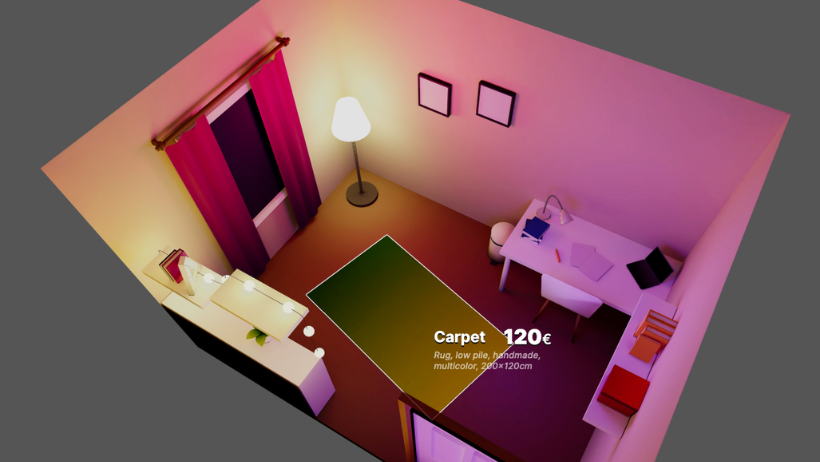Lighting is key in 3D design. It shapes the mood and depth of a scene. But real-time lighting can slow things down. That’s where baked lighting comes in.
In this guide, we’ll explore what it is, why it matters, and when to use it. Whether you build games, render interiors, or animate films, it can save time and boost quality.

What Is Baked Lighting?
Baked lighting means pre-calculating the light in a 3D scene. The software saves this light as a texture. This texture is then applied to surfaces during playback.
Unlike dynamic lighting, doesn’t change in real time. It stays fixed, which speeds up rendering. Also, it lets you use complex shadows and indirect lighting without a heavy cost.
Why Use Baked Lighting?
There are many benefits. Let’s look at the top reasons:
- Faster performance: Your system skips live light calculations.
- Better visuals: Global illumination, bounce light, and shadows look smoother.
- More stable scenes: Lighting is consistent and doesn’t flicker.
- Efficient for static elements: Perfect for objects that don’t move.
Additionally, baked lighting can run well on low-end devices, making it great for mobile and VR.
When to Use Baked Lighting
Baked lighting works best in scenes that don’t change much. Here are good examples:
- Indoor scenes with fixed lighting
- Game levels with mostly static props
- Architectural walkthroughs
- Pre-rendered animations
If you don’t need lights to move or change, baking them is smart. However, dynamic characters or changing weather need real-time lighting.
Types of Light That Can Be Baked
Not every light type can or should be baked. Here’s a quick breakdown:
- Directional lights: Good for baked sunlight.
- Point lights: Ideal for lamps and bulbs.
- Spotlights: Great for focused indoor lights.
- Area lights: Useful for soft shadows.
Meanwhile, lights with animations or time-of-day shifts should stay dynamic.
How It Works
Let’s break the process down:
- Set your lights and objects
- Mark static objects
- Adjust baking settings
- Bake the light
- Preview and tweak the result
The bake creates lightmaps—images that store light and shadow. These are later applied to your 3D surfaces.
Most 3D tools like Blender, Unity, or Unreal Engine make this process simple.
Benefits of Baked Lighting
Still not sure if it is worth it? Here are more reasons:
- Less GPU load: Because lights are pre-rendered.
- Smooth shadows: Without flicker or noise.
- Realistic bounce lighting: For warm, rich scenes.
- Repeatable results: Your renders always look the same.
Moreover, baked lighting works well with texture atlases and UV maps, further boosting speed.
Downsides and When Not to Use It
No method is perfect. It has limits:
- No movement: Baked lights can’t animate.
- Long bake times: Large scenes take hours to bake.
- Hard to change: Need to re-bake for edits.
- Needs good UVs: Overlaps or stretching cause artifacts.
Therefore, for real-time games or fast-changing scenes, dynamic lighting might be better.
Best Practices
Want better results? Follow these tips:
- Use high-resolution lightmaps
- Unwrap UVs cleanly
- Test different light settings
- Keep lightmap texels balanced
- Use probes for indirect light
Also, preview your bake in real-world lighting to check the tone.
Popular Tools That Support Baked Lighting
Many 3D programs support baked lighting. Here are top tools:
- Blender: Great free tool with Cycles bake.
- Unity: Real-time engine with auto baking tools.
- Unreal Engine: Uses Lightmass for GI baking.
- Maya: Advanced light baking for animation.
Each tool has different baking workflows, but the concept is the same.
Baked Lighting in Real Projects
Many industries use baked lighting. For example:
- Games: Level design and environment art
- Architecture: Walkthroughs and client demos
- Film: Backgrounds and static shots
- VR: Low-lag scenes on mobile headsets
Thanks to baked lighting, these scenes look great and run well.
>>> Read more: A Comprehensive Guide to Blender for 3D Printing
Final Thoughts
Baked lighting is a smart choice for many 3D scenes. It makes your visuals look polished. At the same time, it helps your system run faster. While it doesn’t work for every case, it’s a top tool in many pipelines.
If your project uses static lights and objects, baking is the way to go. It saves time in rendering and gives you more creative control.
Bake Faster with 3S Cloud Render Farm
Light baking can be slow, especially on big scenes. Why wait? 3S Cloud Render Farm lets you bake lights and render projects much faster. It supports major 3D tools like Blender and Maya.